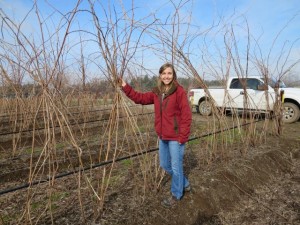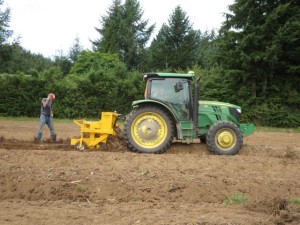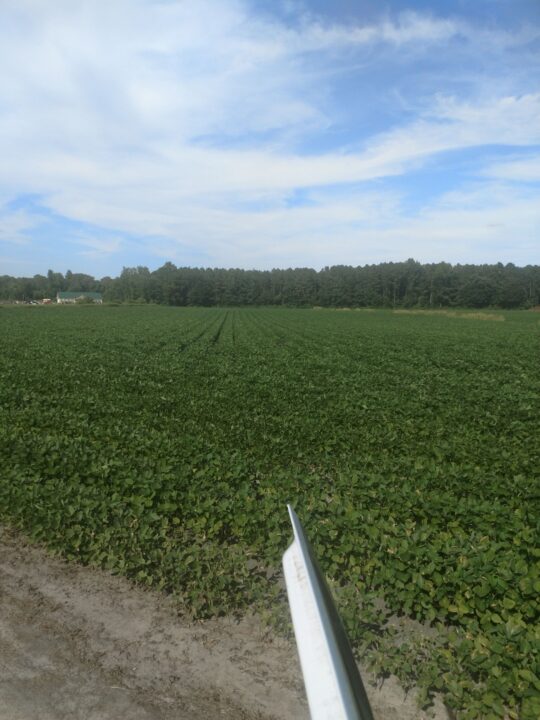Removing Leftover Roots May Improve New Raspberry Crop’s Health
Results from a research study in Washington shows that root removal, especially when combined with fumigation, may be an effective strategy in lowering disease pressure and nematode populations in continuous red raspberry systems.

Lisa Wasko DeVetter (Photo Credit: WSU)
Lead Researcher Lisa Wasko DeVetter, an assistant professor of berry crops at the Washington State University-Mount Vernon Research Center, and her team found that populations of root lesion nematodes (P. Penetrans) were reduced by an astounding 99.8% right after root removal.
Soilborne diseases Fusarium and Pythium were reduced by 16% and 21%, respectively, but when combined with fumigation using Telone C-35 and chloropicrin, those percentages jumped to 64% and 69%, respectively.
With fumigation clearly being a huge factor, DeVetter can see why a grower might like to just to fumigate like he always has. But the problem is that fumigants are only labeled for plant tissue of a certain size and to a certain soil depth. But perhaps most important is that growers no longer have access to what some have called the ultimate fumigant, methyl bromide.
When you consider that growers in the Pacific Northwest harvest more than 10,000 acres of red raspberries each year with an estimated production value of $67 million, DeVetter says her team’s research will have some impact, and not just in Washington and Oregon.
“It is a piece of the research puzzle in trying to understand more about the soilborne pests and diseases that affect red raspberries in the Pacific Northwest with a goal to better manage them. But the research absolutely has application elsewhere,” she says. “I get focused on our region, but it’s good to see the bigger picture.”
Three Big Machines
DeVetter’s team tried out three different root removal devices, a potato harvester; a plant lifter, which is used by several growing operations in the region that also function as nurseries; and a beach cleaner, which is just like it sounds. The first two were locally available, the last was purchased by a local grower.
All three machines worked well, removing at least 90% of the root material in a split-plot experiment conducted in a commercial field of Meeker red raspberries. However, to be that effective, the operators had to drive at a crawl, from a high of 1 mile per hour all the way down to 0.25 mph.
Driving that slowly is obviously time-consuming, and time is money, so the mechanical options are rather expensive, DeVetter concedes. But when looking at a problem, you have to weigh all the factors. Most growers remove their fields in the late summer, then fumigate right away or wait until the fall, and replant in the spring. It used to be, when they had methyl bromide, growers could repeat that cycle and replant disease was hardly a concern.

One of the three machines tried by the Washington State University researchers to remove old roots and other red raspberry debris was a plant lifter, which is used by several growing operations in the region that also function as nurseries. (Photo Credit: Lisa Wasko DeVetter, WSU)
“But now without methyl bromide fields often get taken out after 4-7 years of production when they used to be 10-15 years and sometimes longer — it’s pretty amazing,” she says. “We are looking at economics of it; essentially we’ll be comparing disease management. If we get an extra year of production from a field it may well be worth it.”
Nasty Surprise
Despite the fact that the combination of mechanical root and crown removal and fumigation killed nearly all the root lesion nematodes, DeVetter and her colleagues were in for an unwelcome discovery the following spring. As entomologists are fond of saying, in the end, the bugs always win.
“One thing that surprised us is how quickly nematode populations rebuilt, even after fumigation,” she says. “Root lesion nematodes were really problematic — the numbers rebounded in May and June faster than we expected.”
In part because of the nematodes’ wicked game, DeVetter says the most important takeaway message for growers is that current practices of soilborne management are not controlling pests and diseases, and more work lies ahead.
“Studying removal of root inoculum is one tool we can use to understand this system,” she says. “Understanding it better will help us develop improved tools for soilborne disease management of red raspberries.” ●









